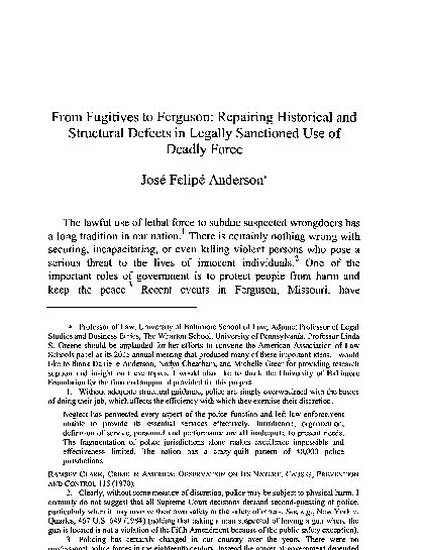
The lawful use of lethal force to subdue suspected wrongdoers has a long tradition in our nation. There is certainly nothing wrong with securing, incapacitating, or even killing violent persons who pose a serious threat to the lives of innocent individuals. One of the important roles of government is to protect people from harm and keep the peace. Recent events in Ferguson, Missouri, have highlighted the tension between the officers on the beat and citizens on the street. These tensions are not likely to subside unless there are major structural changes in the way the police do their job and the perception of officers in the community. Police are often perceived as getting special privileges in the courts, even when they engage in wrongdoing. This is particularly true in African-American neighborhoods, which seem to distrust police. Similar to other components of the judicial system that give rise to racial concerns such as obtaining confessions or selecting a jury -concerns that police officers receive special treatment instills little confidence in police for minority communities. Some of that distrust comes from the troubling application of the Fourth Amendment in the urban setting.
